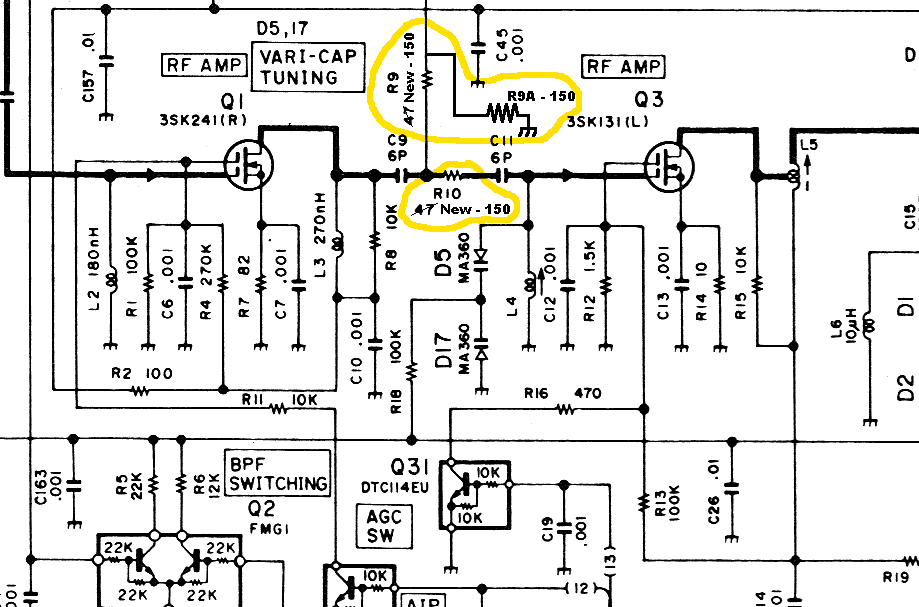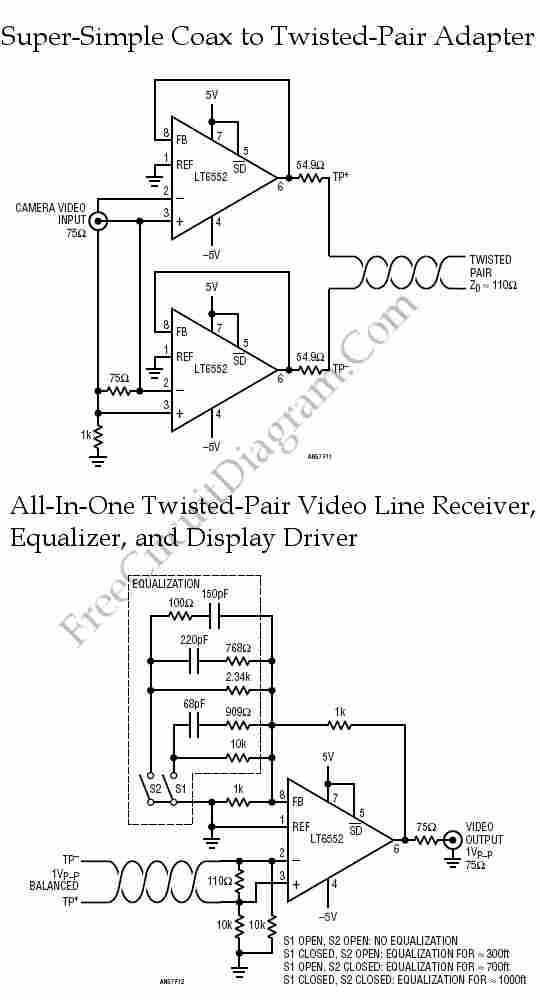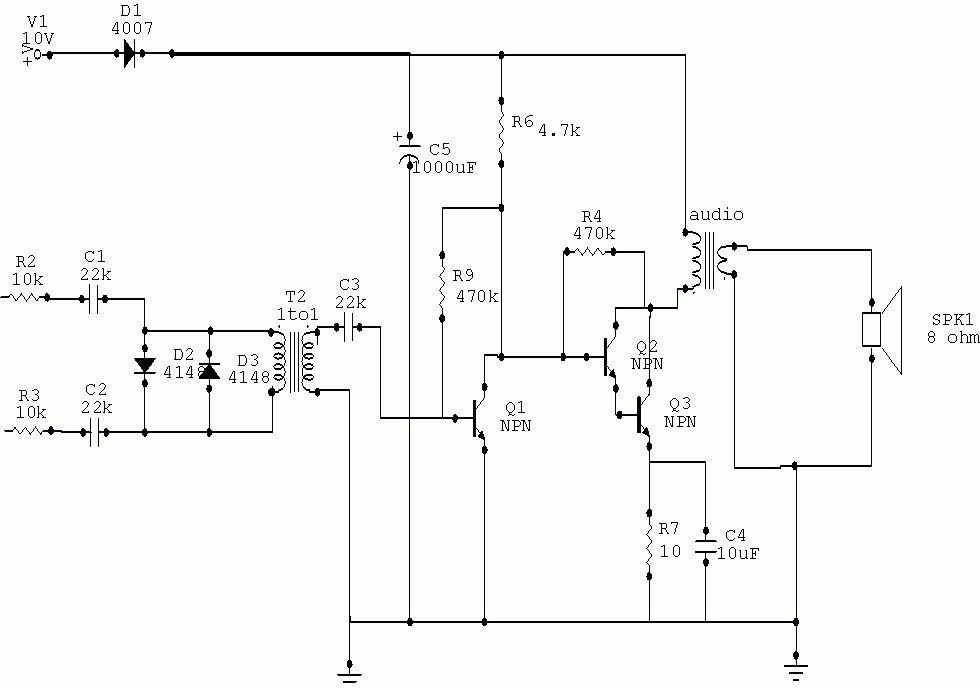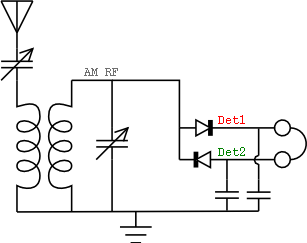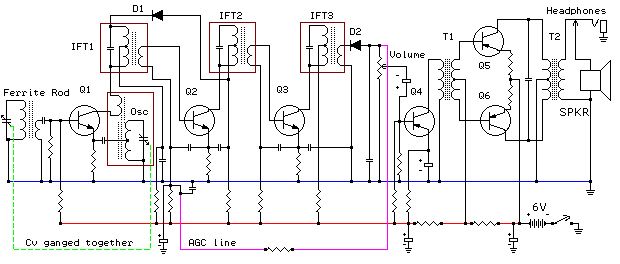
M-88L70 3V DTMF Receiver
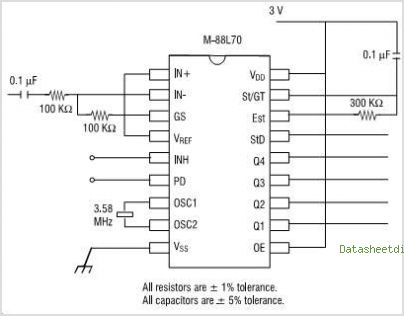
The MAX2385 and MAX2386 LNA mixer integrated circuits (ICs) are designed for CDMA, cdma2000 1x, and GPS applications. These ICs are optimized for the Japanese frequency band of 832 MHz to 870 MHz and can also be configured for the Korean, Chinese, and U.S. bands of 869 MHz to 894 MHz. To enhance linearity and minimize current consumption, the CDMA LNA incorporates four gain states. The high-gain LNA features a reduced supply-current mode for operation when no transmit (Tx) signal is present, as well as a high linearity mode that minimizes Tx cross-modulation in the presence of a strong interfering signal during talk mode. Two low-gain modes provide higher cascade IIP3 at reduced current levels. The lowest gain setting allows for LNA bypass and an ultra-low chip current of 4 mA, significantly extending the standby time of the device and reducing overall current consumption. Gain-switching hysteresis can be adjusted through the selection of an off-chip resistor, which sets the current and linearity for each mode to customize the switchover points. In GPS mode, the MAX2386 LNA offers high gain, while the MAX2385 is designed for lower current consumption with reduced gain. The CDMA paths of both ICs are identical. Additionally, the MAX2385 and MAX2386 feature an on-chip local oscillator (LO) divider, enabling the use of a single voltage-controlled oscillator (VCO) module for both cellular and GPS modes. An on-chip LO buffer is included to drive the Tx upconverter, further simplifying system design.
The MAX2385 and MAX2386 ICs represent advanced solutions for RF applications, particularly in mobile communication systems. Their design focuses on optimizing performance across various operational modes while maintaining low power consumption, which is critical for battery-operated devices. The inclusion of multiple gain states allows for flexibility in signal amplification, accommodating varying environmental conditions and signal strengths. The ability to adjust gain-switching hysteresis through an external resistor provides designers with the capability to fine-tune performance characteristics to meet specific application requirements.
In practical applications, the MAX2385 and MAX2386 can be employed in a range of devices, from smartphones to specialized communication equipment, where efficient power management and high performance are essential. The dual-band capability ensures compatibility with different regional frequency allocations, making these ICs versatile for global markets. Furthermore, the shared LO divider and buffer circuit streamline the design process, reducing the number of components required and minimizing potential points of failure in the system.
Overall, the MAX2385 and MAX2386 LNA mixer ICs are integral components for modern communication systems, offering a balance of performance, efficiency, and flexibility that meets the demands of today's wireless technologies. Their design considerations make them suitable for a wide array of applications, ensuring reliable operation in both CDMA and GPS functionalities.The MAX2385 MAX2386 LNA mixer ICs are designed for CDMA cdma2000 1x and GPs applications. The MAX2385 MAX2386 are optimized for the Japanese 832MHz to 870MHz band, and CAN also be configured for the Korean/Chinese/U. S. 869MHz to 894MHz band. To optimize linearity and current consumption, the CDMA LNA comprises four gain states. The high-gain LNA h as a reduced supply-current mode for use when no transmit (Tx) signal is present, and a high linearity mode, which minimizes Tx cross-modulation in the presence of a large interfering signal during talk mode. Two low-gain modes, provide higher cascade IIP3 at lower current. The lowest gain setting provides an LNA bypass and an ultra-low chip current of 4mA. This significantly extends the phone`s standby time and lowers the overall current consumption of the phone.
Gain-switching hysteresis CAN be adjusted by selection of an off-chip resistor, which sets the current and linearity in each mode to customize switchover points. In GPs mode, the MAX2386 LNA offers high gain and the MAX2385 features lower current consumption with lower gain.
The CDMA paths of the MAX2385 MAX2386 are identical. The MAX2385 MAX2386 include an on-chip LO divider, which enables the use of one VCO module for both cellular and GPs modes. An on-chip LO Buffer to drive the Tx upconverter further reduces system complexity. 🔗 External reference
The MAX2385 and MAX2386 ICs represent advanced solutions for RF applications, particularly in mobile communication systems. Their design focuses on optimizing performance across various operational modes while maintaining low power consumption, which is critical for battery-operated devices. The inclusion of multiple gain states allows for flexibility in signal amplification, accommodating varying environmental conditions and signal strengths. The ability to adjust gain-switching hysteresis through an external resistor provides designers with the capability to fine-tune performance characteristics to meet specific application requirements.
In practical applications, the MAX2385 and MAX2386 can be employed in a range of devices, from smartphones to specialized communication equipment, where efficient power management and high performance are essential. The dual-band capability ensures compatibility with different regional frequency allocations, making these ICs versatile for global markets. Furthermore, the shared LO divider and buffer circuit streamline the design process, reducing the number of components required and minimizing potential points of failure in the system.
Overall, the MAX2385 and MAX2386 LNA mixer ICs are integral components for modern communication systems, offering a balance of performance, efficiency, and flexibility that meets the demands of today's wireless technologies. Their design considerations make them suitable for a wide array of applications, ensuring reliable operation in both CDMA and GPS functionalities.The MAX2385 MAX2386 LNA mixer ICs are designed for CDMA cdma2000 1x and GPs applications. The MAX2385 MAX2386 are optimized for the Japanese 832MHz to 870MHz band, and CAN also be configured for the Korean/Chinese/U. S. 869MHz to 894MHz band. To optimize linearity and current consumption, the CDMA LNA comprises four gain states. The high-gain LNA h as a reduced supply-current mode for use when no transmit (Tx) signal is present, and a high linearity mode, which minimizes Tx cross-modulation in the presence of a large interfering signal during talk mode. Two low-gain modes, provide higher cascade IIP3 at lower current. The lowest gain setting provides an LNA bypass and an ultra-low chip current of 4mA. This significantly extends the phone`s standby time and lowers the overall current consumption of the phone.
Gain-switching hysteresis CAN be adjusted by selection of an off-chip resistor, which sets the current and linearity in each mode to customize switchover points. In GPs mode, the MAX2386 LNA offers high gain and the MAX2385 features lower current consumption with lower gain.
The CDMA paths of the MAX2385 MAX2386 are identical. The MAX2385 MAX2386 include an on-chip LO divider, which enables the use of one VCO module for both cellular and GPs modes. An on-chip LO Buffer to drive the Tx upconverter further reduces system complexity. 🔗 External reference
